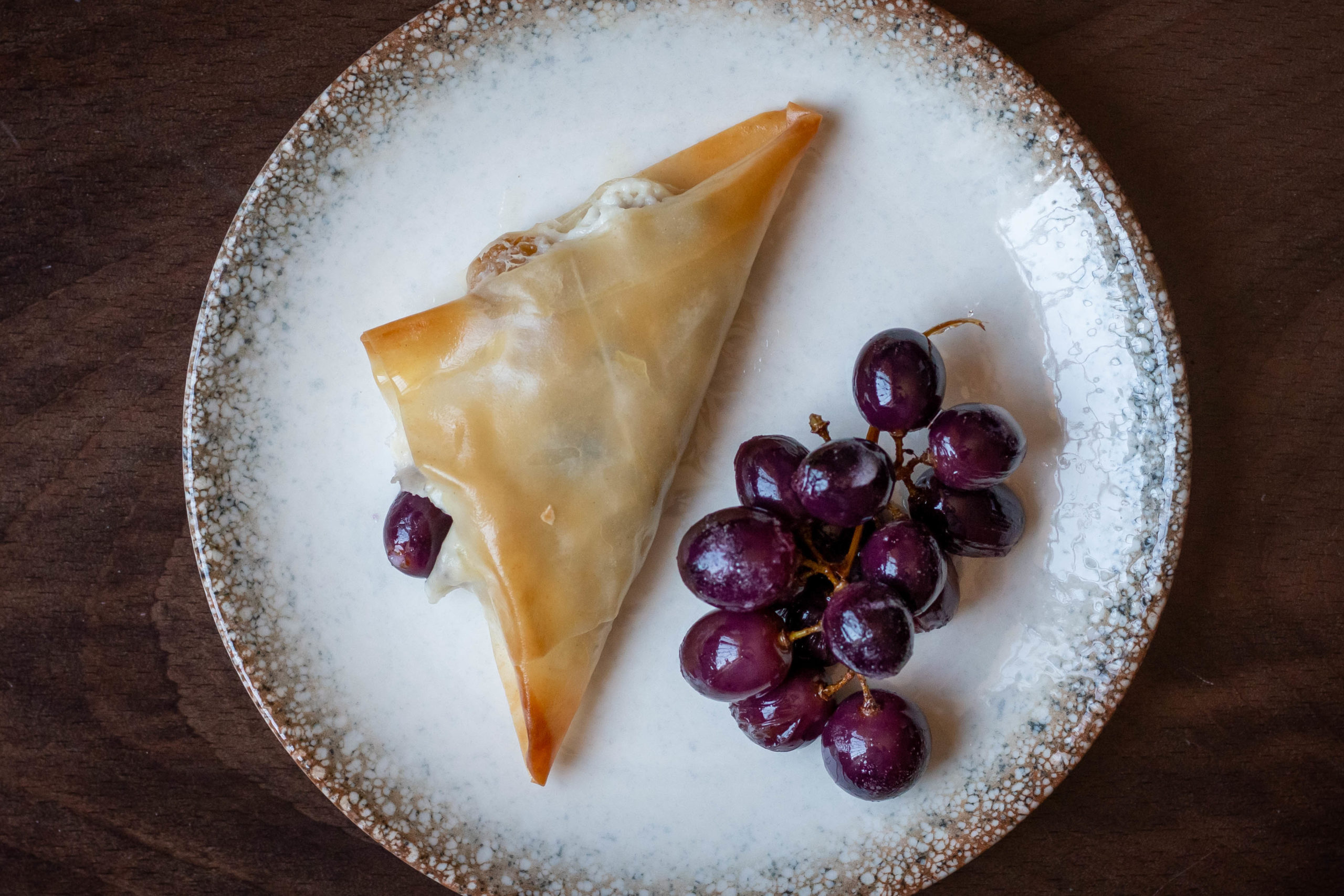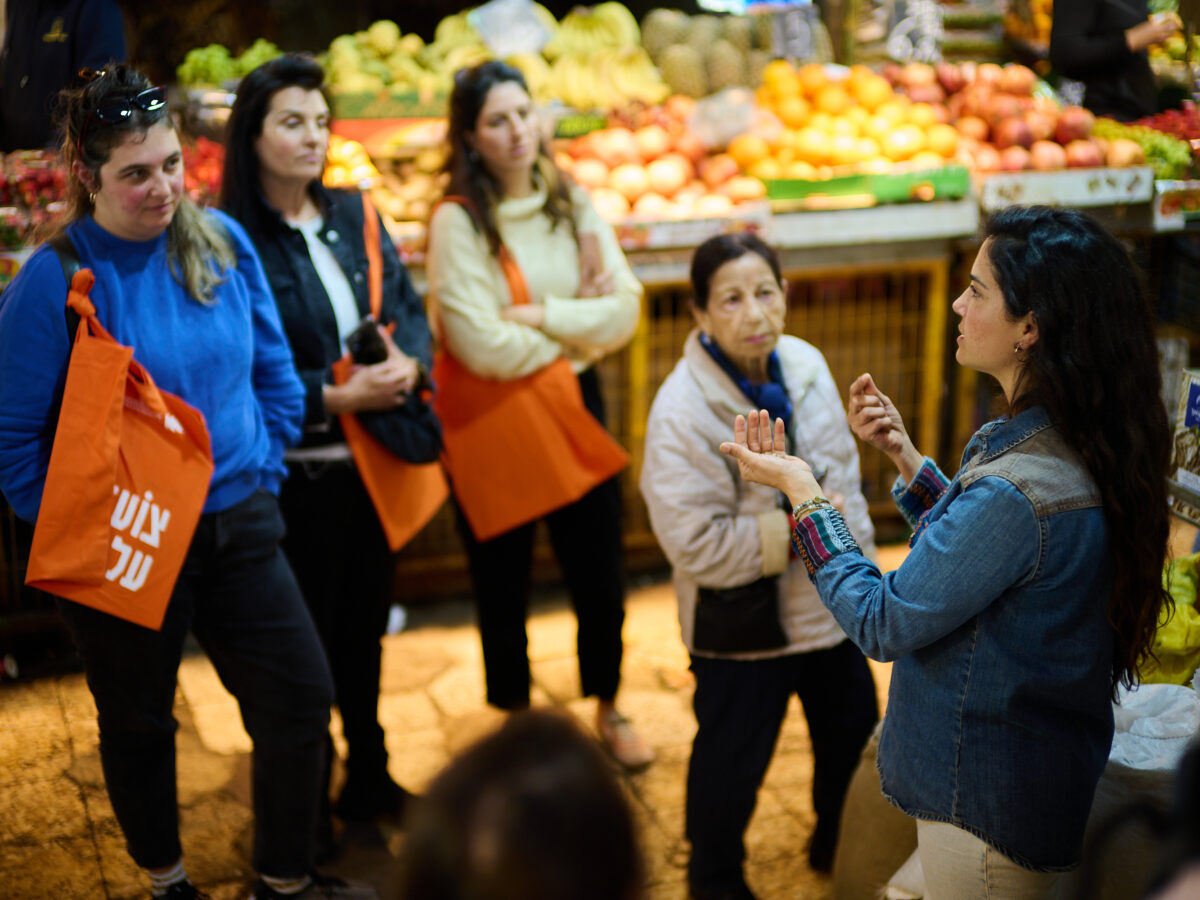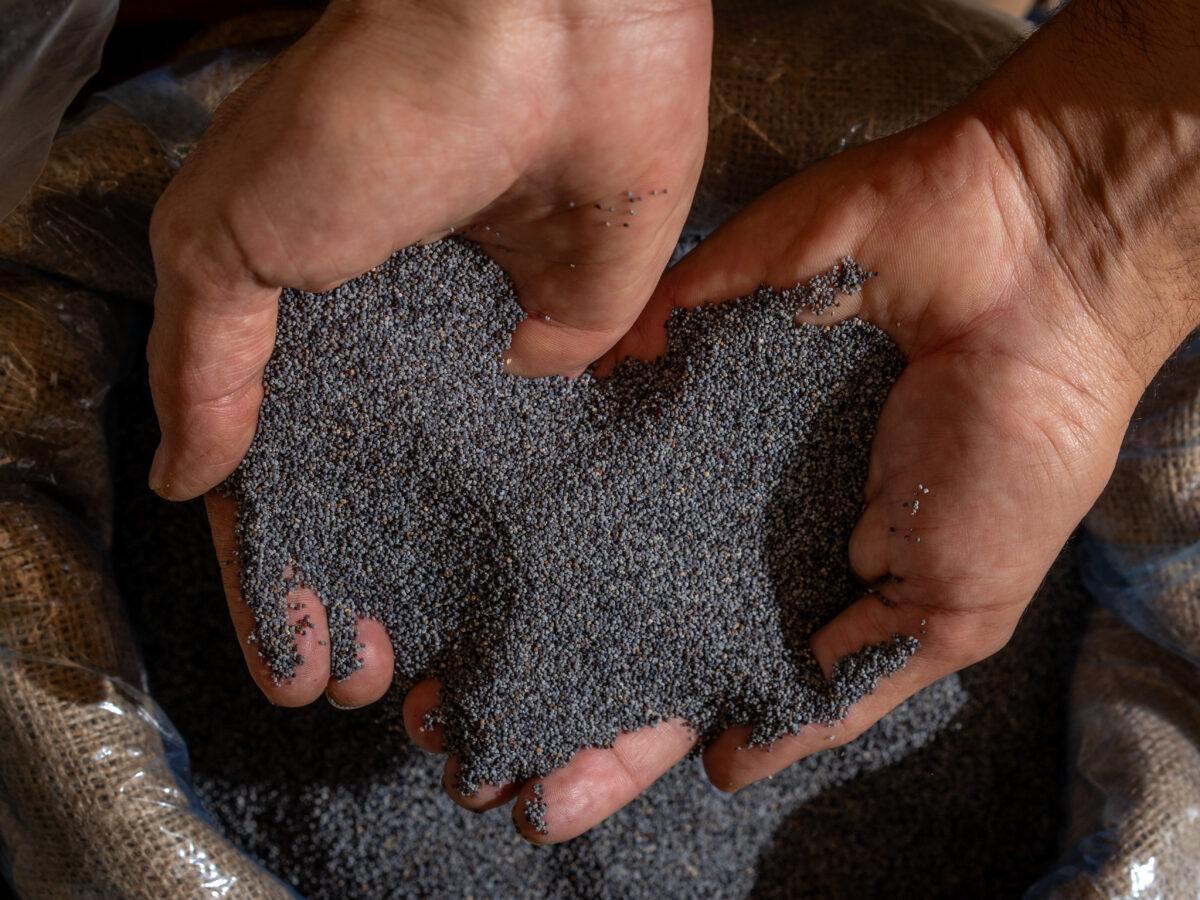I have acrophobia, a paralyzing fear of heights. Just ask my embarrassed husband, who once tried to drag me from the elevator door at the top of the Eiffel Tower. When I talked to a friend who is also a psychologist, she asked if I had this fear as a child, too. Her question brought me back to the spring breaks of my childhood, and the answer was no. In those days, under the hot, caressing sun, when everything around was green and in bloom, I would join my sisters in climbing the ancient oak in our yard, or our rooftop, to collect young grape leaves my mother, aunts, and neighbors used to make dawali – Levantine stuffed grape leaves.
My parents’ vine was well known in our neighborhood. Besides offering an annual supply of leaves for stuffing, this Dabouki-Hebronite variety also produced husrum – unripe grapes – for the entire area. Some of the husrum was squeezed to make a sour juice used as a seasonal substitute for lemon juice, and the rest was fermented in salt water (husrum makhlal) or chopped with garlic, hot pepper and nuts and kept in a jar sealed with olive oil. In summer, the husrum left on the vine would ripen into clusters of golden grapes. The sweet grapes were eaten in the morning and evening alongside sour labneh or salty jibneh, a local cheese, and the remaining grapes were squeezed and cooked into dibs (grape molasses) or jam, or dried to make raisins.
The Grapevine in Palestinian Culture
The grapevine holds a central status in Arab culture in general, and in Palestinian culture in particular. A grapevine, along with fig and olive trees were considered three must-have plants in each house’s yard. In old Arab houses, the center of the garden was a vine arbor, and families would spend the hot summer days in its shade. I vividly remember the one at my grandparents’ home, where we spent many late summer evenings. Grandpa and his friends would sit under the arbor, drinking kahwe sade (fermented black coffee) and admiring the heavy grapes which resembled golden chandeliers, reflecting the Quran verses describing a paradise abundant with grapes.

What is the reason for the grapevine’s prominent cultural and religious status in Islam? According to a common folk tale, the first grapevine sprouted from grape seeds watered with the tears of the angel Jibril, when he lamented the expulsion of Adam and Eve from the Garden of Eden; he was also the one who taught them how to cultivate and eat the plant. In addition, grapes are mentioned 11 times in the Quran, and in the description of paradise, God mentions its wealth of grapes. For this reason, this plant is treated as holy and dubbed shajra mubaraka (the blessed tree).
Historically, grapes in our area have primarily been grown for wine making. The region is ripe with ancient wine presses discovered in archeological excavations. The quality of local wines and grapes was mentioned in texts by the pharaohs, who imported them in caravans to Egypt. One of the major historical growing areas was Hebron – where about 15 grape varieties are grown, among them the Dabouki, the Jandali, the Beiruti etc. With the expansion of Islam and subsequently, the prohibition of alcohol consumption, production of wine by-products grew in the region. In addition to grape vinegar we have the dibs, or grape molasses, derived from sweet, late summer grape juice, filtered with a type of mudstone called marl. To this day, the scent of caramelized bonfires fills the streets of Hebron from the end of August to the beginning of September as Palestinians make antbikh (grape jam with crunchy grape seeds popping in your mouth with every bite), malban (grape leather with anise seeds or nigella, sundried on the roofs), dibs, and raisins.

The leaves of the vine are also harvested and used for cooking and stuffing, a practice which likely was originally borrowed from stuffing fig leaves. Grape cultivation continues to be a major contributor to the economy of Arab countries; this is also true in the territories of the Palestinian authority, where it is second largest source of agricultural income, following olives. This is despite the great sensitivity of the plant, requiring full attention from its cultivators all year round.
Cooking With Grapes in My Home
Nowadays, we can find a range of grapes in local markets in the summer. My favorite is a yellow variety that comes at the end of summer, when the long season in the sun concentrates all of the sugars making the fruit perfect for jams and molasses that I use in the winter and spring. To celebrate the grape season, try an ancient recipe lamb’s neck stuffed with raisins and grapes and a modern one from my home for filo triangles stuffed with kashta, grapes, and raisins.



